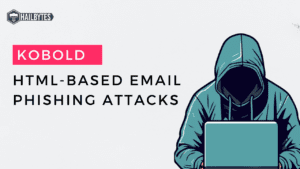Ragnar Locker Ransomware

Introduction
In 2022, the Ragnar Locker ransomware operated by a criminal group known as Wizard Spider, was used in an attack on the French technology company Atos. The ransomware encrypted the company’s data and demanded a ransom of $10 million in Bitcoin. The ransom note claimed that the attackers had stolen 10 gigabytes of data from the company, including employee information, financial documents, and customer data. The ransomware also claimed that the attackers had gained access to Atos’ servers by using a 0-day exploit in its Citrix ADC appliance.
Atos confirmed that it was the victim of a cyberattack, but did not comment on the ransom demand. However, the company did say that it had “activated all relevant internal procedures” in response to the attack. It is unclear if Atos paid the ransom or not.
This attack highlights the importance of patching systems and ensuring that all software is up-to-date. It also serves as a reminder that even large companies can be victims of ransomware attacks.
What is Ragnar Locker Ransomware?
Ragnar Locker Ransomware is a type of malware that encrypts a victim’s files and demands a ransom be paid in order to decrypt them. The ransomware was first seen in May of 2019, and has since been used in attacks against organizations around the world.
Ragnar Locker Ransomware is typically spread through phishing emails or by exploit kits that take advantage of vulnerabilities in software. Once a system is infected, the ransomware will scan for specific file types and encrypt them using AES-256 encryption.
The ransomware will then display a ransom note that instructs the victim on how to pay the ransom and decrypt their files. In some cases, the attackers will also threaten to release the victim’s data publicly if the ransom is not paid.
How to Protect Against Ragnar Locker Ransomware
There are a number of steps that organizations can take to protect themselves from Ragnar Locker Ransomware and other types of malware.
First, it is important to keep all software up-to-date and patched. This includes operating systems, applications, and security software. Attackers often take advantage of vulnerabilities in software to infect systems with ransomware.
Second, organizations should implement strong email security measures to prevent phishing emails from reaching users’ inboxes. This can be done by using email filtering and spam blocking tools, as well as employee training on how to spot phishing emails.
Finally, it is important to have a robust backup and disaster recovery plan in place. This will ensure that if a system is infected with ransomware, the organization can recover their data from backups without having to pay the ransom.
Conclusion
Ransomware is a type of malware that encrypts a victim’s files and demands a ransom be paid in order to decrypt them. Ragnar Locker Ransomware is a type of ransomware that was first seen in 2019 and has since been used in attacks against organizations around the world.
Organizations can protect themselves from Ragnar Locker Ransomware and other types of malware by keeping all software up-to-date and patched, implementing strong email security measures, and having a robust backup and disaster recovery plan in place.







